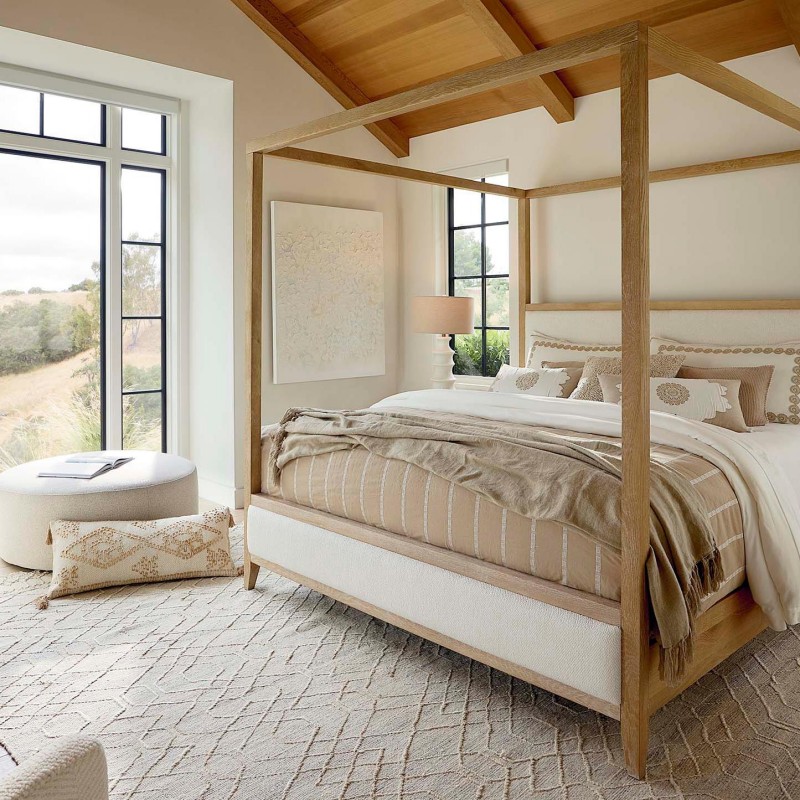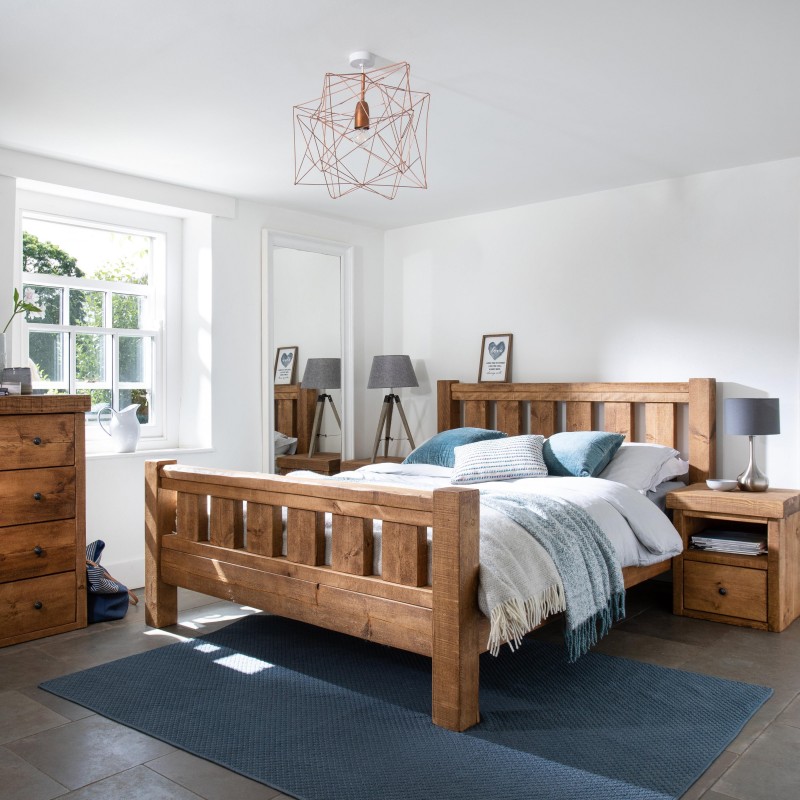The height of your bed can significantly impact your sleep quality and overall comfort. While many overlook this crucial aspect of bedroom furnishings, the right bed height can make all the difference in your nightly routine. Whether you prefer a low profile bed that allows for easy entry and exit or a higher bed that suits your style and aesthetics, understanding the best bed heights for your comfort is essential. This article explores various factors that influence bed height, how they can affect your health and comfort, and offers guidance on how to choose the right height for your specific needs and preferences. By understanding how bed height plays a role in your comfort, you can make better decisions regarding your sleep environment, ultimately leading to more restful and rejuvenating nights.
The Importance of Bed Height
Understanding Bed Height and Its Effect
Bed height refers to the distance from the floor to the top of the mattress. This measurement can greatly affect not only the aesthetics of your bedroom but your overall comfort level as well. The right bed height can make getting in and out of bed easier, creating a more comfortable sleeping experience. It can also impact how well you sleep, your overall posture, and your comfort levels throughout the night.
Different factors influence the importance of bed height, including personal preferences, the type of mattress being used, and individual health conditions. For example, someone recovering from surgery may require a higher bed to facilitate easier access, while others may desire a lower bed for a more grounded and cozy feel.
Health Implications of Bed Height
Choosing the best bed height goes beyond mere comfort; it can also have health implications. For individuals with mobility issues, such as arthritis or back pain, a bed that is too low or too high can exacerbate discomfort:
- Low Beds: While they may seem cozy, low beds can make it harder to rise, causing strain on the knees and back.
- High Beds: On the opposite end, excessively high beds can pose challenges for individuals who have trouble climbing or sitting down. Accessibility is key for a restful night’s sleep.
Personal Preference
Ultimately, the best bed height is subjective and varies from person to person. Factors such as height, age, and lifestyle should all play a role in your decision-making process. What works for someone else may not be suitable for you. Therefore, it is important to assess your unique needs and preferences to find your ideal bed height.
Factors Influencing Bed Height Selection
When determining the best bed height for your comfort, several factors come into play. Here are some key considerations to keep in mind during the selection process.
Mattress Thickness
The thickness of your mattress plays a pivotal role in determining the overall height of your bed. Standard mattresses range from 8 to 14 inches, while specialty mattresses such as memory foam or hybrid options may vary in height:
- Low-Profile Options: If you have a low-profile mattress, consider pairing it with a higher bed frame to achieve the desired overall height.
- Thicker Mattresses: Thicker mattresses can result in a taller sleeping surface, which may influence how well you can get in and out of bed comfortably.
Bed Frame Style
Different bed frame styles can contribute to the height of your bed. From platform beds to traditional frames, the design can affect the overall height:
- Platform Beds: These typically have a lower profile, as they lack a box spring and provide a more modern aesthetic.
- Box Spring Beds: Traditional frames often incorporate box springs, which add inches to your overall height. Keep this in mind when selecting your overall bed setup.
Personal Height
Your personal height should also be considered when selecting bed height. Taller individuals may find lower beds uncomfortable, as they may need to bend excessively to sit down or rise:
- Height Considerations: Stand by your bed and test how comfortable it is to sit on it. Your knees should ideally be at or slightly lower than hip level when sitting.
Accessibility Needs
As previously mentioned, accessibility is a crucial factor for those with limited mobility or health concerns. If accessibility is a concern, consider the following:
- Higher Beds: A higher bed can provide ease of access for those who struggle with bending or squatting.
- Adjustable Beds: These offer the flexibility to raise or lower the entire sleeping surface, catering to varying comfort and accessibility needs.
Bedroom Aesthetics
The aesthetics of your bedroom can also influence your choice of bed height. A well-coordinated design contributes to the overall atmosphere of the space. Consider how the bed height will interact with the decor:
- Visual Balance: A low bed may create a more grounded feel, while a high bed can enhance luxury or sophistication in the room.
- Coordination with Furnishings: Ensure that bed height complements other furniture, such as nightstands and dressers, to create a harmonious design.
Types of Bed Heights
Low Beds
Low beds have gained popularity due to their modern, minimalist designs, and grounded aesthetic. However, they may present challenges for some individuals:
- Height: Typically 10 inches or lower from the ground.
- Pros: Cozy feel, good for small spaces or low ceilings, stylish appearance.
- Cons: Difficult for those with mobility issues, may lead to discomfort for taller individuals.
Average-Height Beds
Average-height beds generally sit between 14 to 24 inches high. They provide an excellent balance between ease of access and aesthetic appeal.
- Height: Commonly ranges from 14 to 20 inches.
- Pros: Universally comfortable, easy accessibility, ample variety in styles.
- Cons: May be too low for some users who prefer elevated beds, can vary widely depending on mattress type.
High Beds
High beds, often ranging from 24 inches to 36 inches, are favored for their dramatic aesthetic and ease of getting in and out of bed.
- Height: 24 to 36 inches high from the floor.
- Pros: Ideal for those who prefer high elevation, stylish options available.
- Cons: May require a step stool for shorter individuals, can be awkward for reclining.
Adjustable Beds
Adjustable beds offer the ultimate flexibility by allowing users to change their sleeping position and height according to preference.
- Height: These beds can vary in height depending on the settings selected.
- Pros: Ideal for personalized comfort, accessibility for all users.
- Cons: Higher price point than traditional beds, requires a power source.
Benefits of Choosing the Right Bed Height
Selecting the right bed height is essential for a variety of reasons, each contributing to your overall comfort and sleep quality.
Improved Sleep Quality
A properly fitted bed height can significantly improve sleep quality. Comfort extends beyond the mattress itself; achieving an ideal height allows for a more restful position, which supports better posture during sleep.
Enhanced Comfort
The right height ensures that users can easily get in and out of bed without strain. This comfort translates into fewer interruptions throughout the night, leading to better sleep.
Reduced Risk of Injury
Correct bed height can reduce the risk of injury, especially for individuals with mobility issues. Avoiding excessive bending and making it easier to rise can prevent falls and strains.
Increased Longevity of the Mattress
Using a bed height that matches your needs can prolong the life of your mattress. Proper alignment and support help maintain the integrity of the materials, leading to better performance over time and saving you money on replacements.
Universal Appeal
Choosing the right bed height makes it comfortable for everyone, catering to family members or guests of varying heights and mobility levels.
Shopping Tips for Choosing the Best Bed Height
Measure Your Space
Before making a purchase, carefully measure your room to determine how much space you have. Measure both the height from the floor to the top of the bedding and any clearances needed for furniture such as nightstands.
Test Before You Buy
If possible, visit a store and test various bed heights to assess comfort levels. Pay attention to how easy it is to get in and out of each style. Finding the right one may require sitting on different beds to see what feels best.
Read Reviews
Customer reviews can provide valuable information about the comfort, durability, and style of different bed heights. Take time to research user feedback before selecting your ideal bed height.
Consult Professionals
If you’re unsure about the best option for your needs, don’t hesitate to reach out to experts in furniture or bedding. They can provide personalized recommendations based on your specific preferences and health considerations.
Conclusion
Understanding how to choose the best bed heights for your comfort is crucial for enhancing your sleep quality and overall well-being. Whether you prefer a low bed, an average-height option, a high bed, or even an adjustable design, the right choice will depend on understanding your personal preferences, lifestyle, and needs.
By exploring the importance of bed height, the different types available, and shopping tips, you can feel confident in your selection. Ultimately, investing time in finding the perfect bed height will contribute significantly to creating a comfortable sleep environment that promotes restful nights and rejuvenated mornings.
As you embark on this journey, remember to prioritize comfort, functionality, and style. With the right bed height, you can truly enjoy a peaceful sleep that sets the tone for your day ahead best bed heights for your comfort.